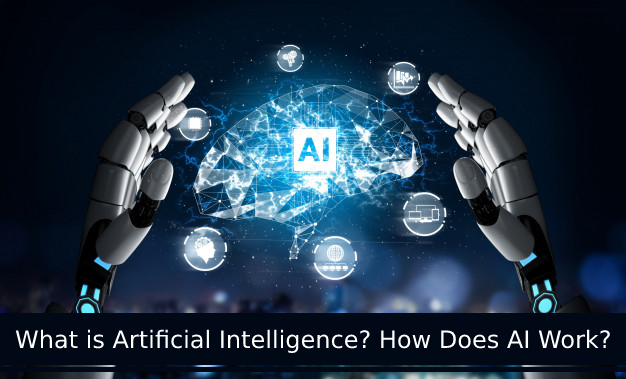“Depending on who you ask, AI is either man’s greatest invention since the discovery of fire”, as Google’s CEO said at Google’s I/O 2017 keynote, or it is a technology that might one day make man superfluous.
Copyright by www.business2community.com
 What’s inarguable is major companies have embraced AI as if it was one of the most important discoveries ever invented. In the US, Amazon, Apple, Microsoft, Facebook, IBM, SAS, and Adobe have all infused AI and machine learning throughout their operations, while in China the big four – Baidu, Alibaba, Tencent, Xiaomi – are coordinating with the government and all working on unique and almost siloed AI initiatives.
What’s inarguable is major companies have embraced AI as if it was one of the most important discoveries ever invented. In the US, Amazon, Apple, Microsoft, Facebook, IBM, SAS, and Adobe have all infused AI and machine learning throughout their operations, while in China the big four – Baidu, Alibaba, Tencent, Xiaomi – are coordinating with the government and all working on unique and almost siloed AI initiatives.
In her article Understanding Three Types of Artificial Intelligence, Anjali UJ explains “The term AI was coined by John McCarthy, an American computer scientist in 1956.” Anjali speaks of the following three types of AI, including:
- Narrow Artificial Intelligence: AI that has been trained for a narrow task.
- Artificial General Intelligence: AI containing generalized cognitive abilities, which understand and reason the environment the way humans do.
- Artificial Super Intelligence: AI that surpasses human intelligence and allows machines to mimic human thought.
AI is not a new technology, in reality, it’s decades old. In his MIT Technology Review article Is AI Riding a One-Trick Pony?, James Somers states “Just about every AI advance you’ve heard of depends on a breakthrough that’s three decades old.” Recent advances in chip technology, as well as improvements in hardware, software, and electronics have turned AI’s enormous potential into reality.
Neural Nets
AI is founded on Artificial Neural Networks (ANN) or just “Neural Nets”, which are non-linear statistical data modelling tools used when the true nature of a relationship between input and output is unknown. In his article Machine Learning Applications for Data Center Optimization, Jim Gao describes neural nets as “a class of machine learning algorithms that mimic cognitive behavior via interactions between artificial neurons.” Neural nets search for patterns and interactions between features to automatically generate a best fit model.
They do not require the user to predefine a model’s feature interactions. Speech recognition, image processing, chatbots, recommendation systems, and autonomous software agents are common examples of machine learning. There are three types of training in neural networks; supervised, which is the most common, as well as unsupervised training and reinforcement learning. […]
Read more www.business2community.com


“Depending on who you ask, AI is either man’s greatest invention since the discovery of fire”, as Google’s CEO said at Google’s I/O 2017 keynote, or it is a technology that might one day make man superfluous.
Copyright by www.business2community.com
In her article Understanding Three Types of Artificial Intelligence, Anjali UJ explains “The term AI was coined by John McCarthy, an American computer scientist in 1956.” Anjali speaks of the following three types of AI, including:
AI is not a new technology, in reality, it’s decades old. In his MIT Technology Review article Is AI Riding a One-Trick Pony?, James Somers states “Just about every AI advance you’ve heard of depends on a breakthrough that’s three decades old.” Recent advances in chip technology, as well as improvements in hardware, software, and electronics have turned AI’s enormous potential into reality.
Neural Nets
AI is founded on Artificial Neural Networks (ANN) or just “Neural Nets”, which are non-linear statistical data modelling tools used when the true nature of a relationship between input and output is unknown. In his article Machine Learning Applications for Data Center Optimization, Jim Gao describes neural nets as “a class of machine learning algorithms that mimic cognitive behavior via interactions between artificial neurons.” Neural nets search for patterns and interactions between features to automatically generate a best fit model.
They do not require the user to predefine a model’s feature interactions. Speech recognition, image processing, chatbots, recommendation systems, and autonomous software agents are common examples of machine learning. There are three types of training in neural networks; supervised, which is the most common, as well as unsupervised training and reinforcement learning. […]
Read more www.business2community.com
Share this: